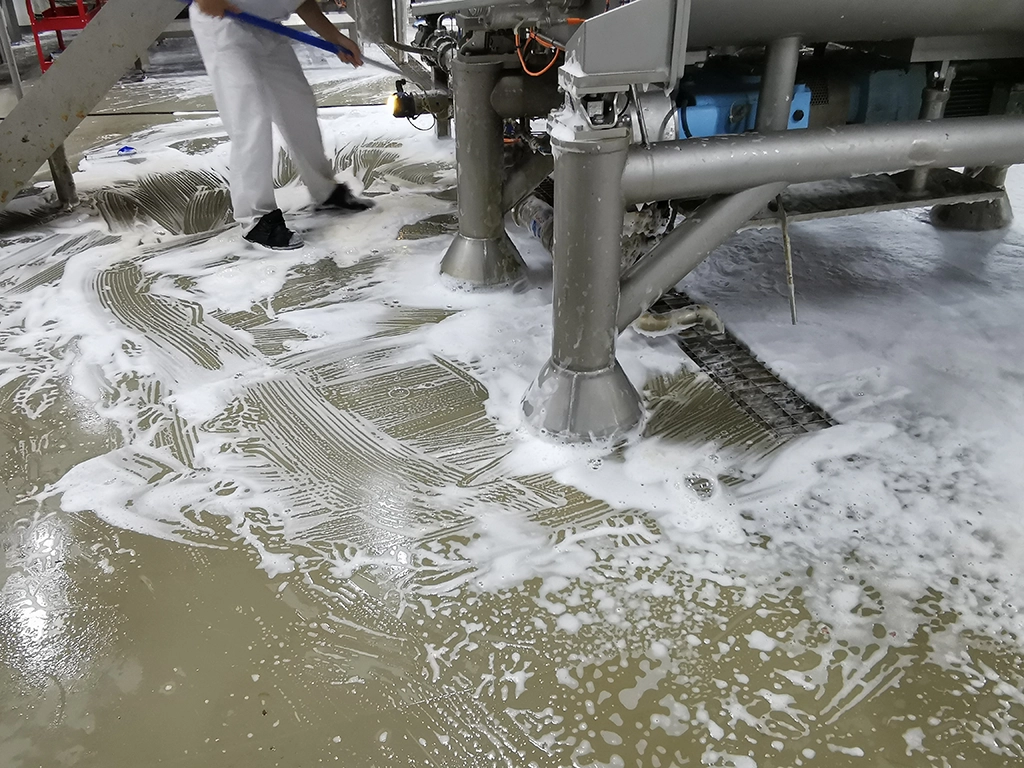FSNS Certification & Audit performs hundreds of food safety certification audits each year, including for BRC certification. Our auditors have compiled a list of the top 10 reasons for a BRC version 9 audit non-conformity to help you prepare for your next audit. Here are a few high-level statistics:
- Avg. of 4.86 non-conformities identified per BRCGS audit.
- 59% of all NCs are related to section 4 of the standard.
- 16.4% of all NCs are related specifically to section 4.4 – Building fabric, raw material-handling, preparation, processing, packing and storage areas.
Below, we provide the appropriate clause and item from the BRCGS Food Safety code for each of the top 10 non-conformities. Here’s the full list:
10) Temporary Repairs – 4.7.3
Where temporary repairs are made, these shall be documented and controlled to ensure that the safety or legality of products is not jeopardised. These temporary measures shall be permanently repaired as soon as practicable and within a defined timescale.
Common Problems:
- Lack of documentation for temporary repairs made.
- Unauthorized temporary repairs.
Considerations:
- Are employees trained on what constitutes a temporary repair and how they should be handled? All employees?
- Are supervisors trained to continually monitor their areas for temporary repairs?
9) Record Control and Maintenance – 3.3.1
The site shall maintain genuine records to demonstrate the effective control of product safety, legality and quality.
Common Problems:
- Records incomplete. The following are commonly missing:
- Required data (time, date, monitor name, etc.).
- Verification or record review section incomplete.
Considerations:
- What type of training is provided to personnel responsible for completing records?
- Are supervisors responsible for reviewing records (shipping/receiving, titrations records, etc.)? When conducting internal audits, are you reviewing records for completeness?
8) Cleaning and Sanitation Procedures – 4.11.2
Documented cleaning and disinfection procedures shall be in place and maintained for the building, plant, and all equipment. Cleaning procedures for the processing equipment and food contact surfaces shall, at a minimum, include:
- Responsibility for cleaning.
- Item/area to be cleaned.
- Frequency of cleaning.
- Method of cleaning, including dismantling equipment for cleaning purposes where required.
- Cleaning chemicals and concentrations.
- Cleaning materials to be used.
- Cleaning records (including records for completion and sign-off) and responsibility for verification.
The frequency and methods of cleaning shall be based on risk. The procedures shall be implemented to ensure appropriate standards of cleaning are achieved.
Common Problems:
- Cleaning and sanitation chemical concentrations are not compliant with documented procedures.
- Failure to establish or follow a master sanitation schedule.
- Recordkeeping errors:
- Documenting pre-op inspections
- Titration records
- Master sanitation records
Facilities often neglect to adhere to documented procedures when preparing chemical concentrations, which will lead to a non-conformity. Make sure you have established a master sanitation schedule and, of course, follow it.
Auditors also observe NCs because of poor cleaning and sanitation recordkeeping, so make sure your team understands what to document and the importance of carrying it out. Our sanitation education courses can help ensure you’re meeting the requirements of the standard.

7) Document Control – 3.2.1
The company shall have a procedure to manage documents which form part of the food safety and quality system.
Common Problems:
- Lack of identification for controlled documents.
- Incorrect revision dates.
- Lack of reasons for revisions.
- Incorrect version of a controlled document in use.
Considerations:
- Who has access to edit controlled documents?
- What is the review and approval process? Does this include removing obsolete documents and verify accuracy of log?
- Is a thorough verification process/internal audit in place?

6) Ceilings and Overheads – 4.4.4
Ceilings and overheads shall be constructed, finished, and maintained to prevent the risk of product contamination.
Common Problems:
- Cobwebs
- Exposed insulation
- Peeling/cracking paint or caulk
- Unclean overheads
Considerations:
- Are overheads included in the master sanitation schedule?
- How often are overheads inspected?
Potential contamination can come from just about anywhere, including directly above your production areas. Auditors often identify peeling paint, loose caulk, rust flakes, peeling tape, and other contaminants on ceilings and overheads that must be addressed.
Make sure your team includes the cleaning of these areas in your SOPs, too.
Our BRCGS Food Safety Audit Checklist can help ensure your facility doesn’t receive any of the non-conformities on this list.

5) Internal and External Doors – 4.4.8
Doors (both internal and external) shall be maintained in good condition. At a minimum:
- External doors and dock levelers shall be close fitting or adequately proofed.
- External doors to open product areas shall not be opened during production periods except in emergencies.
- Where external doors to enclosed product areas are opened, suitable precautions shall be taken to prevent pest ingress.
Common Problems:
- Dock doors with gaps or not tight-fitting.
- Man doors identified with gaps.
Considerations:
- Are employees trained to help monitor doors? Are employees encouraged to bring damaged doors to the attention of management?
- Is a reporting system in place when doors are damaged? Is this followed?
- How often are doors verified/audited?
4) Facility Cleanliness – 4.11.1
Number 4 on our list of top 10 reasons for a BRC audit non-conformity is as important as it is direct:
The premises and equipment shall be maintained in a clean and hygienic condition.
Common Problems:
- Product buildup on equipment.
- Unclean equipment missed during pre-operation inspections.
Considerations:
- Do sanitation personnel know the problematic areas of their area?
- How are staff conducting pre-op inspections trained/verified?
- How often are management involved in pre-op inspections? Is the frequency adequate?
Every food safety professional knows the importance of clean, sanitary operations. The most common observances our auditors see is unclean equipment following a pre-op inspection; and dust, spiderwebs, dirt, and other contaminants in warehouses and storage areas.
While it might seem less critical to maintain non-production areas or surfaces that do not come into direct contact with food, cleanliness across the entire premises is essential as per the BRCGS Food Safety standard. If all areas of your facility aren’t clean and hygienic, you risk a non-conformity notice in your next BRC audit.

3) Equipment Design and Construction – 4.6.2
The design and construction of equipment shall be based on risk, to prevent product contamination. For example, the use of the correct seals, impervious surfaces or smooth welds and joints, where they are exposed to product and could otherwise result in foreign-body, microbiological or allergen contamination of the product.
Equipment that is in direct contact with food shall be suitable for food contact and meet legal requirements where applicable.
Common Problems:
- Rusty utensils, equipment, and parts.
- Damaged, cracked, peeling equipment and tools.
- Rough or damaged welds.
Considerations:
- Are sanitation and pre-op personnel trained on equipment condition expectations?
- Does post-maintenance inspection include an inspection for cleanability or damage?
- Is management informed when equipment modifications are made? Every time?
We have seen pathogens find harborage in all kinds of easy-to-miss cracks and crevices, such as a broken weld that may be difficult to see at first glance. It’s important to root out and fix broken welds and other damaged areas where microorganisms can take refuge and contaminate your products.
Proper equipment and utensil storage is another major reason our auditors find for a BRC audit non-conformity, so ensure your personnel are following proper procedures.
2) Chemical Control and Storage – 4.9.1.1
Processes shall be in place to manage the use, storage and handling of non-food chemicals to prevent chemical contamination.
Common Problems:
- Secondary chemical containers not properly labeled.
- Chemicals not stored in appropriate location (i.e. food-grade chemicals stored in non-food-grade cabinets).
Considerations:
- Where are the secondary chemical containers coming from? Is there a process to issue these for use? Are people responsible for handling chemicals properly trained?
- Is chemical storage part of internal audits? Is maintenance staff trained on the importance of chemical storage procedures?
1) Ventilation/Condensation – 4.4.10
Number 1 on our list of top 10 reasons for a BRC audit non-conformity is the presence of condensation in production environments, which is often due to poor ventilation. Dust is often present where it can contaminate food as well, which is another consequence of poor ventilation. As the standard states:
Adequate ventilation and extraction shall be provided in product storage and processing environments to prevent condensation or excessive dust.
Common Problems:
- Beaded condensation.
Considerations:
- Has the facility identified the areas where condensation is most likely?
- Are PMs in place to periodically monitor air flow?
- Is a condensation monitoring program in place? Is it based on risk?
- Are supervisors instructed to continually monitor their area?
The Top 10 Reasons for a BRC Audit Non-Conformity: Recap
Being aware of these top 10 reasons for a BRC audit non-conformity can be invaluable in preparing for your next audit.
Remember, these insights are drawn from common problems we’ve observed during audits, and each facility has unique challenges. Continually striving for improvements and fostering a culture of food safety is key. Use this information to achieve higher standards and avoid non-conformities in future BRC audits.
Reach out to our certification and audit experts with questions or to schedule your next BRC audit.



